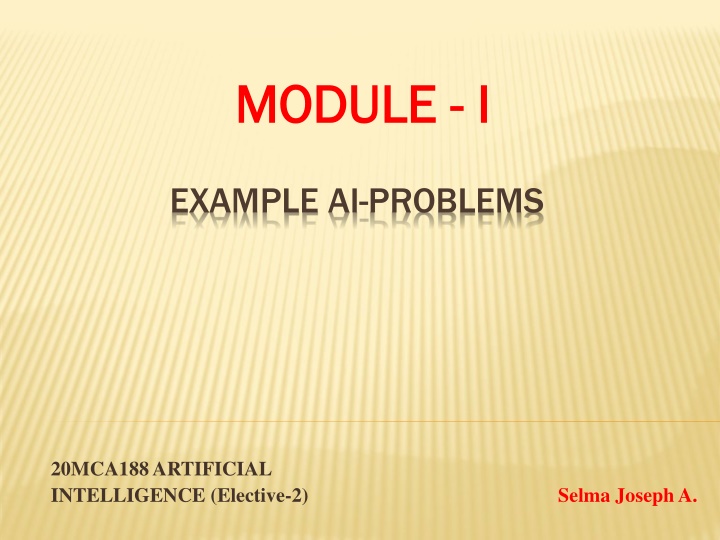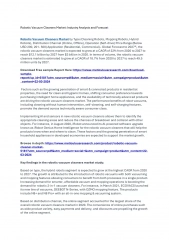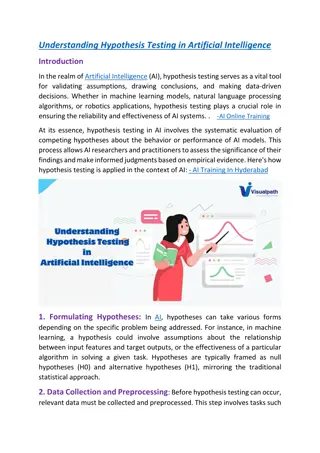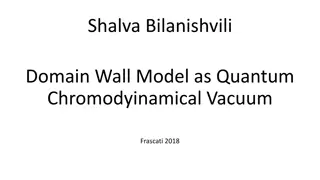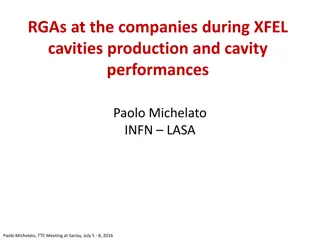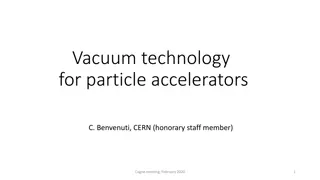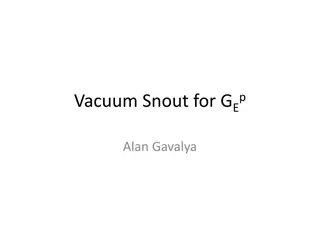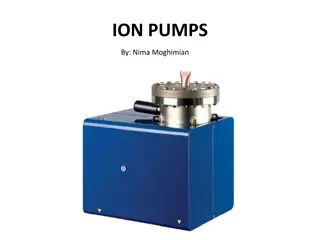Artificial Intelligence Problems in Vacuum Cleaner and 8-Puzzle Worlds
Explore two classic AI problems - the vacuum cleaner world and the 8-puzzle problem. Understand the state space, actions, transition models, goal tests, and path costs involved in these scenarios. Dive into the challenges and strategies of these fascinating artificial intelligence tasks.
Download Presentation

Please find below an Image/Link to download the presentation.
The content on the website is provided AS IS for your information and personal use only. It may not be sold, licensed, or shared on other websites without obtaining consent from the author.If you encounter any issues during the download, it is possible that the publisher has removed the file from their server.
You are allowed to download the files provided on this website for personal or commercial use, subject to the condition that they are used lawfully. All files are the property of their respective owners.
The content on the website is provided AS IS for your information and personal use only. It may not be sold, licensed, or shared on other websites without obtaining consent from the author.
E N D
Presentation Transcript
MODULE MODULE - - I I EXAMPLE AI-PROBLEMS 20MCA188 ARTIFICIAL INTELLIGENCE (Elective-2) Selma Joseph A.
EXAMPLE PROBLEMS The vacuum cleaner world The vacuum cleaner world Description Description This world has just two locations: squares A and B. The vacuum agent perceives which square it is in and whether there is dirt in the square. It can choose to move left, move right, suck up the dirt, or do nothing. One very simple agent function is the following: if the current square is dirty, then suck; otherwise, move to the other square. Standard formulation Standard formulation States : States : The state is determined by both the agent location and the dirt locations. The agent is in one of two locations, each of which might or might not contain dirt. Thus, there are 2 x 22 = 8 possible world states. Initial state : Initial state : Any state can be designated as the initial state. Actions : Actions : In this simple environment, each state has just three actions: Left, Right, and Suck. Transition model : Transition model : The actions have their expected effects, except that moving Left in the leftmost square, moving Right in the rightmost square, and Sucking in a clean square have no effect. Goal test : Goal test : This checks whether all the squares are clean. Path cost : Path cost : Each step costs 1, so the path cost is the number of steps in the path.
The state space for the vacuum world. Links denote actions: L = Left, R =Right, S = Suck.
8-PUZZLE PROBLEM Description Description The 8-puzzle consists of a 3 x 3 board with eight numbered tiles and a blank space. A tile adjacent to the blank space can slide into the space. The objective is to reach a specified goal state. Standard formulation Standard formulation States: States: A state description specifies the location of each of the eight tiles and the blank in one of the nine squares. (The total number of states is 9! = 362880. Initial state: Initial state: Any state can be designated as the initial state. Actions: Actions: Actions may be defined as 8-puzzle movements of the blank space Left, Right, Up, or Down. Different subsets of these are possible depending on where the blank is.
Transition model: Transition model: Given a state and action, this returns the resulting state; for example, if we apply Left to the start state in Figure, the resulting state has the 5 and the blank cell switched. Goal test: Goal test: This checks whether the state matches the goal configuration . Path cost: Path cost: Each step costs 1, so the path cost is the number of steps in the path.
EXERCISE Initial state =S1 Initial state =S1 Possible actions={Left, Right, Up, Possible actions={Left, Right, Up, Down} Down} Actions Actions(S1)={ Left, Up,Down} Transition state Transition state Result(S1,Down)=S2 Goal test Goal test Path cost=5 Path cost=5 1 2 3 1 2 3 4 8 4 5 6 7 6 5 7 8 Goal State Initial State {(1,2,3),(4,8,0),(7,6,5)} down Left Up 1 4 2 8 3 1 4 2 8 3 5 1 4 2 8 3 5 1 4 2 3 5 7 6 5 7 6 7 6 7 8 6 S1 S2 S3 S4 1 4 2 5 3 1 4 2 5 3 6 GOAL !! GOAL !! S6 Down S5 Right 7 8 6 7 8
MISSIONARIES AND CANNIBALS PROBLEM It is an AI famous problem formulation from an analytical viewpoint. Description Description Three missionaries and three cannibals * are on one side of a river, along with a boat that can hold one or two people. Find a way to get everyone to the other side without ever leaving a group of missionaries in one place outnumbered by the cannibals leaving a group of missionaries in one place outnumbered by the cannibals in that place(Figure 1). ever * cannibal * cannibal is a person who eats the flesh of other humans. Figure 1: The missionaries and cannibals problem
MISSIONARIES AND CANNIBALS PROBLEM Standard formulation Standard formulation Ignore all irrelevant parts of the problem (e.g., weather conditions, possible presence of crocodiles in the river, etc.). States: States: Each state is represented by an ordered sequence of 3 numbers (x; y; z) where x : number of missionaries on initial river bank y : number of cannibals on initial river bank Figure 2 z : number of boats on initial river bank For example, if triangles represent missionaries, circles represent cannibals and the left bank is the initial bank then the state shown in Figure 2 is specified by the ordered triple (3, 3; 1). Note that the fact that the boat is at the destination bank is indicated by z = 0. Also it may be noted that not all such ordered triples represent legal states. For example, the triple (2; 3; 1) is not allowed because it represents a state where the number of cannibals outnumber the missionaries.
MISSIONARIES AND CANNIBALS PROBLEM Initial state: Initial state: The ordered sequence = (3; 3; 1) (see Figure 1). Actions: Actions: Take two missionaries, two cannibals, or one of each across in the boat. We have to take care to avoid illegal states. Transition model: Transition model: Given a state and action, this returns the resulting state; for example, if we apply the action Take 1 cannibal to the state (0; 2; 0) the resulting state is (0; 3; 1). Goal test: Goal test: We have reached state (0; 0; 0). Path cost Path cost: Number of crossings. Solution Solution Figure 3 shows the possible legal states reachable from the initial state applying only legal actions. In the figure, the notation indicates the operation of taking 2 cannibals from the bank where the boat is currently located to the other bank and the notation indicates taking two missionaries. From the figure we can easily get the solution to the problem as follows: (https://www.youtube.com/watch?v=W9NEWxabGmg) (https://www.youtube.com/watch?v=W9NEWxabGmg)
CRYPTARITHMETIC PROBLEM This is an example for a special type of problem known as constraint satisfaction problem . No two letters have same value Sum of digits should be as in problem Only one carry forward Digits can be 0 to 9 Left most position should not be 0 Constraints Constraints Description Description A cryptarithmetic puzzle is a mathematical exercise where the digits of some numbers are represented by letters. Each letter represents a unique digit. It will be assumed that the leading digits of numbers are not zero. The problem is to find the digits such that a given mathematical equation is satisfied. 2 1 Letter - Digit T O G U T O T O 2 1 8 0 8 1 + G O + G O ----------- ----------- 2 0 1 O U T O U T
CRYPTARITHMETIC PROBLEM Problem formulation Problem formulation Using the idea of states the problem can be formulated as follows: States: States: Let there be n different letters where n 10. A problem state is an ordered n-tuple of digits (d1, d2, ,dn) representing the digits to be assigned to the integers. Initial state: Initial state: The initial state can be considered as the ordered n-tuple all of whose elements are 0 s. Actions: Actions: Increase the value assigned to a letter by 1. Transition model: Transition model: Given a state and action, this returns the resulting state. Goal test: Goal test: We have reached state (d1, d2, .., dn) which satisfies the constraints of the problem. Path cost: Path cost: Number of actions.
CRYPTARITHMETIC PROBLEM Solution Solution There are algorithms for solving the cryptarithmetic puzzle. Implementations of these algorithms by hand computations is difficult. The method of trial and error keeping in mind Example problem 1 Example problem 1 T O + G O ------- O U T --------- Since T = 2 and T + G 10, T + G must be either 10 or 11. If T + G = 10, then G = 8 and U = 0. This gives a solution to the problem, namely, Solution by hand computation Solution by hand computation Since leading digits are not 0, we have T 0, G 0, O 0. Since O is a non-zero carry digit when the two digits T an G are added, we must have O = 1. Since O = 1 and O + O = T, we must have T = 2. T = 2, O = 1, G = 8, U = 0. 2 1 + 8 1 --------- 1 0 2 --------- If T + G = 11, then U = 1 and in that case U = O = 1 which is not acceptable. Thus the problem has a unique solution as given above
CRYPTARITHMETIC PROBLEM 2 Solve the following cryptarithmetic puzzle: S E N D + M O R E ------------------- M O N E Y ----------------- 1 Character Character Code Code N = E + 1 N + R = 10 + E S S 9 9 E+1+R +1=10+E E E 5 5 1 D+E =Y N N 6 6 9 5 6 7 2,3,4,5,6,7 D D 7 7 M M 1 1 1 0 8 5 + + O O 0 0 R R 8 8 1 0 6 5 2 Y Y 2 2
CRYPTARITHMETIC PROBLEM 2 Solution Solution 1 1. We number the columns as follows: Col : 5 4 3 2 1 ----------------------- S E N D + M O R E ---------------------- M O N E Y ------------------------ 2. 2. From column 5, we must have M = 1 since it is the only carry possible from the sum of two single digit numbers. Col:5 4 3 2 1 ----------------- S E N D + 1 O R E --------------- 1 O N E Y ----------------- Col: 5 4 3 2 1 --------------- S E N D + 1 0 R E ---------------- 1 0 N E Y ---------------- 3. 3. To produce a carry from column 4 to column 5, S + 1 must be at least 9. We have S + 1 = 9 (if there is a carry over from column 3) or 10 (if there is no carry from column 3). So, we must have S = 8 or 9. Then O = 0 or 1. But we have already seen that M = 1. The same value cannot be assigned to O. Therefore we must have O = 0.
CRYPTARITHMETIC PROBLEM 2 8. 8. If E were 6 and D + E at least 12 then D would be 7, but N = E + 1 and N would also be 7 which is impossible. Therefore E = 5 and N = 6. Col:5 4 3 2 1 ---------------- 9 5 6 D + 1 0 8 5 --------------- 1 0 6 5 Y --------------- 9. 9. D + E is at least 12 for that we must have D = 7 and Y = 2. Col:5 4 3 2 1 ----------------------- 9 5 6 7 + 1 0 8 5 ---------------- 1 0 6 5 2 ----------------- 10. 10. The problem has unique solution, namely, D = 7, E = 5, M = 1, N = 6, O = 0, R = 8, S = 9, Y = 2.
BLOCKS WORLD PROBLEM Blocks world (or, the world of blocks) is a model domain used in artificial intelligence to explore different approaches to automated reasoning. This model is used to illustrate that a given algorithm can perform planning, or that it is efficient in terms of the number of calculations required to find a solution or in terms of the length of that solution. Description Description There is a table on which some uniform blocks (cubes) are placed. Some blocks may or may not be stacked on other blocks. We have a robot arm to pick up or put down the blocks. The robot arm can move only one block at a time, and no other block should be stacked on top of the block which is to be moved by the robot arm. The problem is to change the configuration of the blocks from a given initial state to a given goal state.
BLOCKS WORLD PROBLEM States: States: Configurations of the blocks satisfying the conditions. The configurations can be specified using the following predicates where X and Y denote arbitrary blocks: ON(X,Y) : block X is on block Y. ON(X, Table) : block X is on the table. CLEAR(X) : block X has nothing on it. HOLDING(X) : the arm holds block X. ARM(Empty) : the arm holds nothing. Initial state: Initial state: The initial configuration of blocks. Actions: Actions: UNSTACK(X,Y) : UNSTACK(X,Y) : pick up clear block X from block Y and hold it in the arm STACK(X,Y) : STACK(X,Y) : place block X held in the arm onto clear block Y PICKUP(X) : PICKUP(X) : lift clear block X with the empty arm PUTDOWN(X) : PUTDOWN(X) : place block X held in the arm onto a free space on the table.
BLOCKS WORLD PROBLEM Solution Solution The blocks world problem has always a trivial solution: All blocks not already correctly positioned for the goal state be set off onto the table (one at a time with the mechanical arm), and then reassembled in the proper order on top of any blocks already correctly positioned. 1. UNSTACK(2, 3) 1. UNSTACK(2, 3) 7. PICKUP(2) 7. PICKUP(2) 2. PUTDOWN(2) 2. PUTDOWN(2) 8. STACK(2, 5) 8. STACK(2, 5) 3. UNSTACK(4, 5) 3. UNSTACK(4, 5) 9. PICKUP(3) 9. PICKUP(3) 4. PUTDOWN(4) 4. PUTDOWN(4) 10. STACK(3, 1) 10. STACK(3, 1) 5. UNSTACK(5, 6) 5. UNSTACK(5, 6) 11. PICKUP(6) 11. PICKUP(6) 6. STACK(5, 4) 6. STACK(5, 4) 12. STACK(6, 3) 12. STACK(6, 3)
BLOCKS WORLD PROBLEM HOMEWORK !! HOMEWORK !!
WATER JUG PROBLEM Problem statement Problem statement We have two jugs of capacity 4 liters and 3 liters, and a tap with an endless supply of water. The objective is to obtain 2 liters of water exactly in the 4-liter jug with the minimum steps possible. Problem formulation Problem formulation States: States: Let x denote the number of liters of water in the 4-liter jug and y the number of liters of water in the 3-liter jug. Now x = 0, 1, 2, 3, or 4 and y = 0, 1, 2, or 3. The ordered pair ( x, y ) state. Initial state: Initial state: The ordered pair (0 , 0). Actions: Actions: Each action is represented in the form (x , y) -> (u , v) where (x , y) represents the state before the application of the action and (u , v) represents the state after the application of the action. ( x, y ) represents a
Transition model: Transition model: The production system given in Table also specifies the transition model. Goal test: Goal test: The state (2 , n) where n is some integer. Path cost: Path cost: Number of operations performed.
The possible actions and the conditions under which the various actions given in the table: Solution Solution One solution to the water jug problem is given
